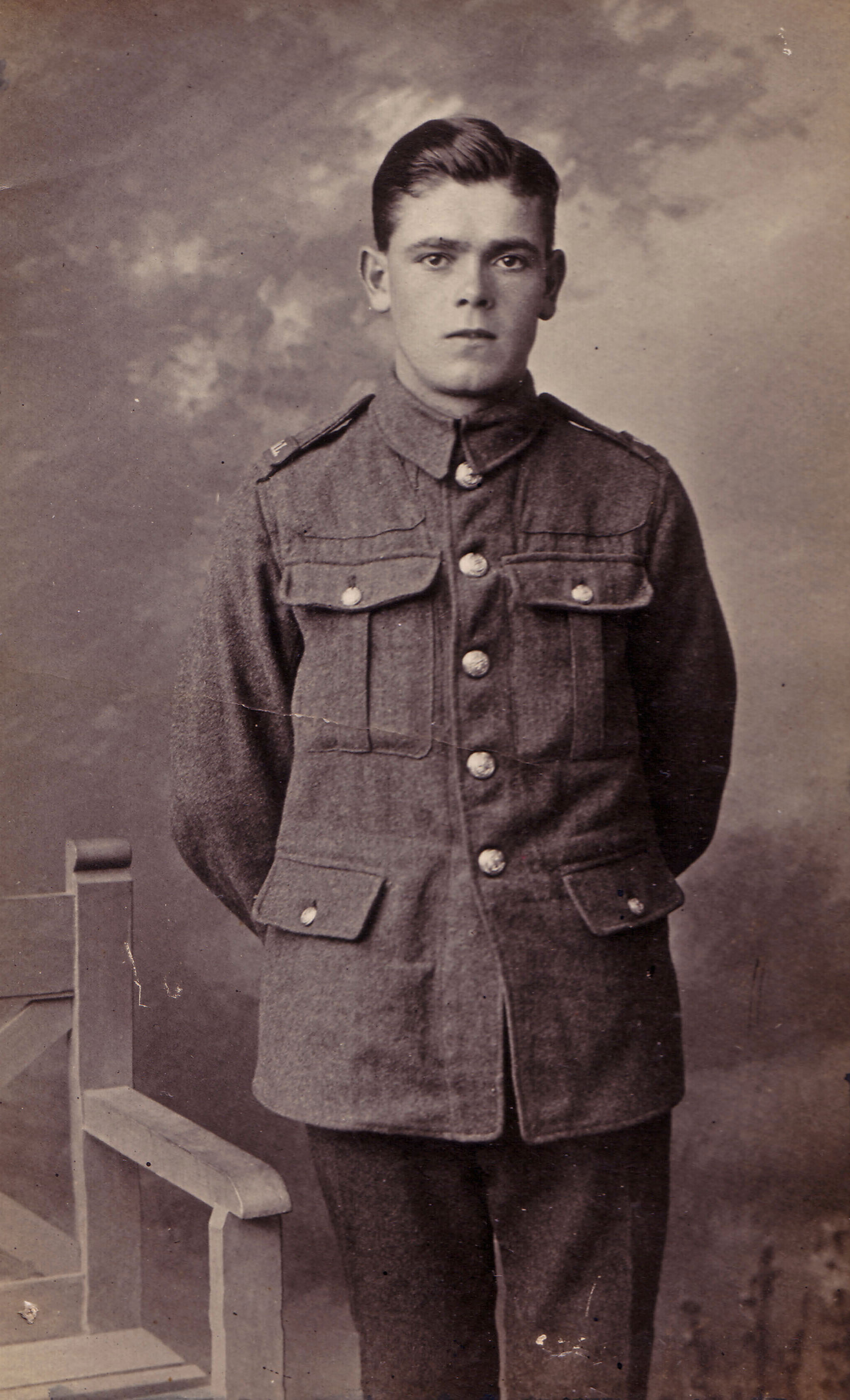
DOCKERTY, HENRY ('HARRY')

Photograph with thanks to Maurice Birks[6a]
|
|
Source |
||||
|
CWGC |
SDGW |
Uttoxeter Advertiser |
Other |
||
|
Parents |
Thomas and Elizabeth Dockerty |
Yes |
|
|
|
|
Mr. & Mrs. Thomas Dockerty |
|
|
|
3, 6aiii |
|
|
Where born |
Uttoxeter |
|
Yes |
|
|
|
When born |
About 1896 |
|
|
|
5 |
|
Address |
Parents: 47, New Road, Uttoxeter |
Yes |
|
|
6a, 6av |
|
New Road, Uttoxeter |
|
|
1c |
3 |
|
|
Spouse |
|
|
|
|
|
|
Children |
|
|
|
|
|
|
Employment Before Joining up |
Chauffeur for Dr. T. Bamford |
|
|
1a, 1b |
3 |
|
Where enlisted |
Lichfield,Staffordshire |
|
Yes |
|
|
|
Regiment |
Formerly 5782, North Staffordshire Regiment |
|
Yes |
|
|
|
York and Lancaster |
Yes |
Yes |
1c |
3, 6aii |
|
|
Unit |
6th Bn |
Yes |
|
|
3 |
|
6th Service Bn |
|
Yes |
|
|
|
|
Rank |
Private |
Yes |
Yes |
1a, 1b, 1c |
3 |
|
Service Number |
31585 |
Yes |
Yes |
|
3 |
|
Date of Death |
9 October 1917 |
Yes |
Yes |
1c |
3, 6aii |
|
Age at time of death |
21 |
Yes |
|
|
6aii |
|
Where Killed or died |
Ypres salient - 3rd Ypres (Passchendaele - Poelcappelle) |
|
|
|
|
|
France/Flanders |
|
Yes |
|
|
|
|
How he died |
Killed in action |
|
Yes |
|
3 |
|
Killed in Action or Died of Wounds |
|
|
1c |
|
|
|
Location of Grave or Memorial |
Tyne Cot Memorial for the Missing Panel 125 to 128 |
Yes |
|
|
|
|
Tyne Cot Memorial for the Missing Panel 128 |
|
|
|
4 |
|
|
Uttoxeter Town War Memorial |
|
|
|
3, 4 |
|
|
Awards |
Recommended in April 1917 |
|
|
|
|
| Harry’s parents were Thomas and Elizabeth Dockerty | |
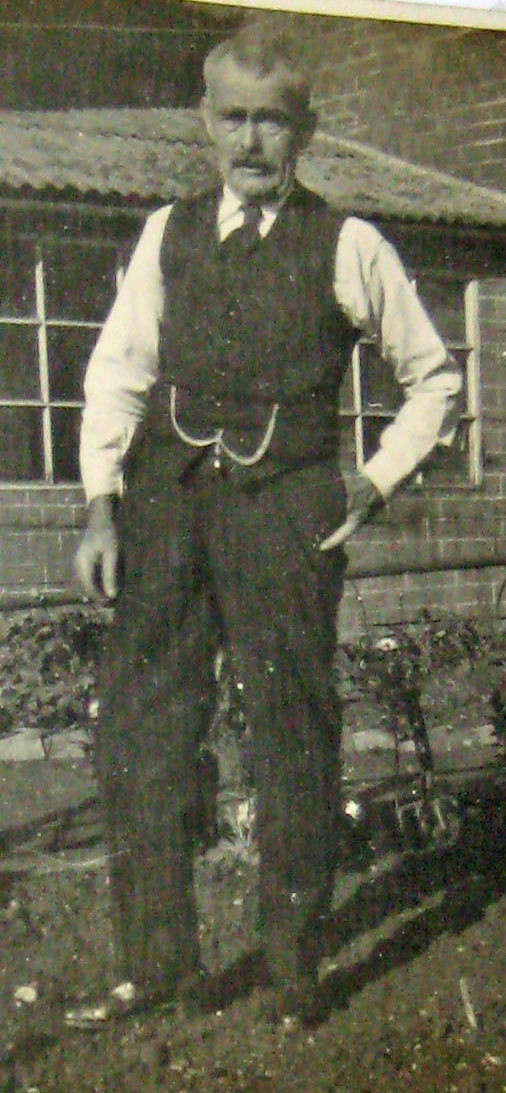 |
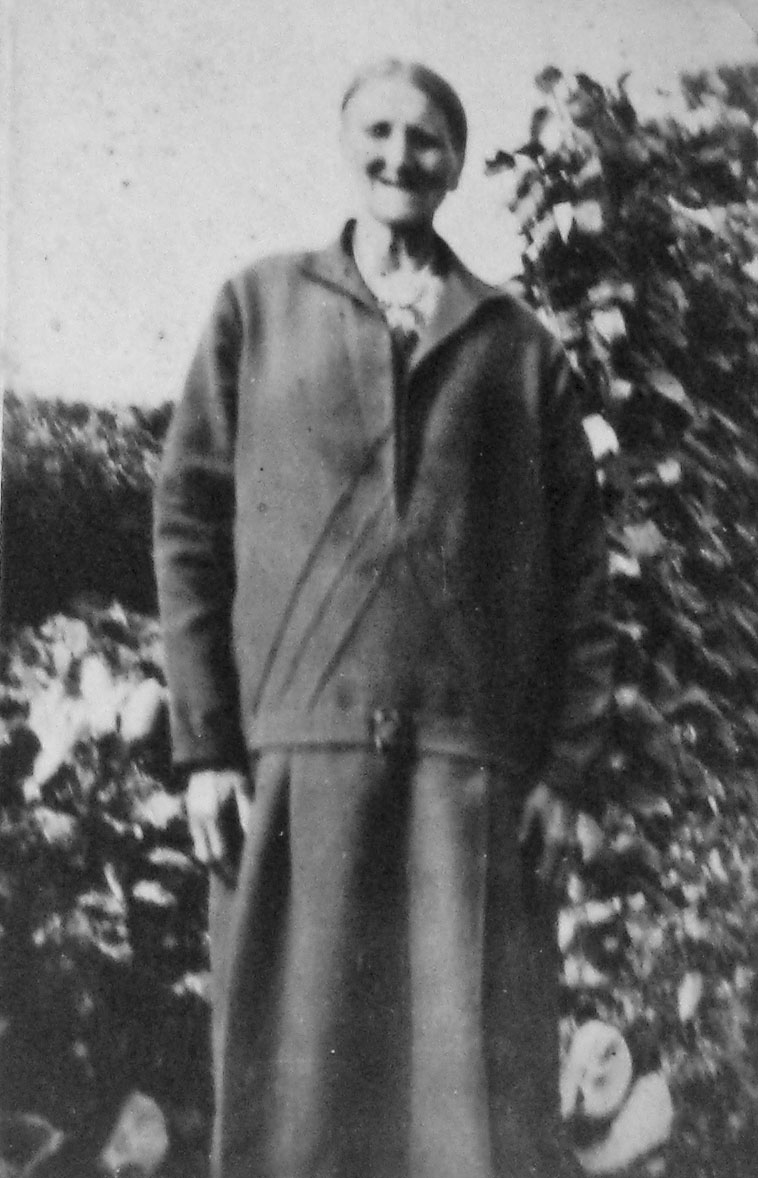 |
| They lived at 47 New Road, Uttoxeter, which Thomas built himself | |
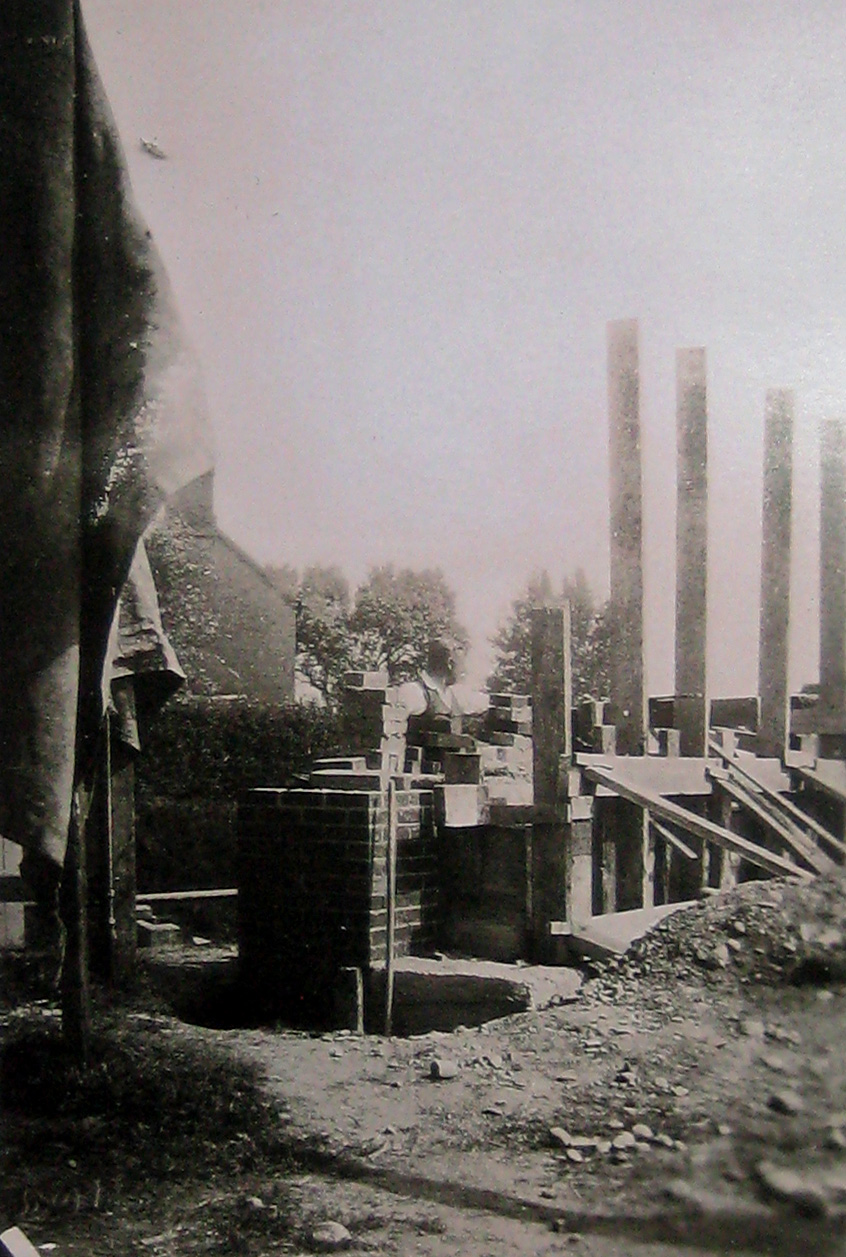 |
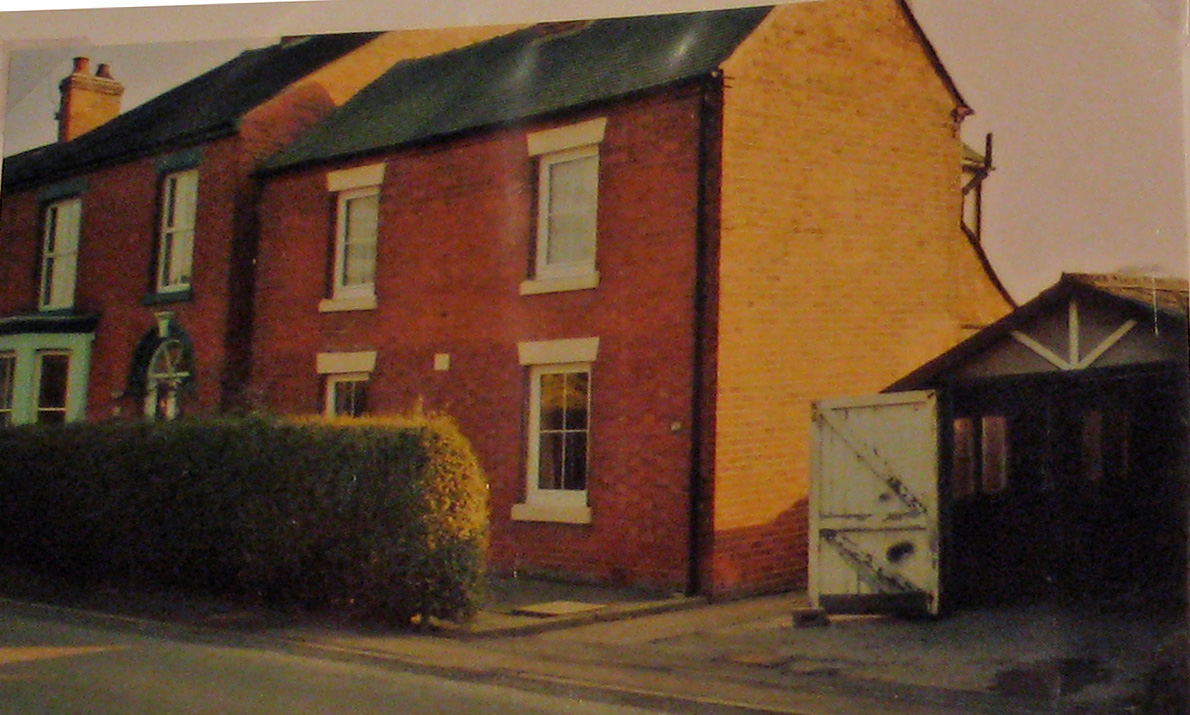 |
In civilian life Harry was the Chauffeur to Dr. T. Bamford in Uttoxeter[1a, 1b]. The motor car was still a comparatively new invention during this era and the position of Chauffeur was a prestigious and responsible job. The book ‘Etiquette for the Chauffeur – Duties and Hints for Chauffeurs’ is a contemporary handbook that was published in 1906[7] and gives a good insight into the life that Harry is likely to have led. The following extracts give a flavour of the role, and we would highly recommend the book to anyone who wishes to know more:
A chauffeur is a man who understands the mechanism, care, and driving of a motor car and who is paid to carry out the wishes and protect the interests of the owner in connection with it. A chauffeur, then, receives wages for his services, and is thus a servant’
Chauffeurs, you know, are a class and a type of men that have never existed before. There are no recognised customs and rules. We have not been brought up to our work, and we have nobody to guide our general conduct.
A chauffeur’s work, in mastering the mechanical details of a car and driving on the highway, needs a keener intelligence than is generally found in those who work amongst horses. One naturally expects to find a cleaner in a garage more intelligent than a washer in a cab yard, and a chauffeur a keener man than the weather-beaten handler of horses.
Your hours are not your own. Your governor bought his car and engaged you for his own convenience. Whenever he happens to want his car he wants you with it, and you must be ready and willing to at once be at his disposal, with the car in perfect tip-top order.
Given the fact that Harry was working for a GP, we can be sure that Harry will have been got out of bed on many occasions to respond to emergency calls!
Amongst many other aspects of a chauffeur’s life, Source 7 goes on to describe the tasks required of a chauffeur in putting the car away at night. It gives some indication of the labour-intensiveness of looking after cars of that period and gives an insight intoHarry’s working life:
Wipe all the grease and dirt off your aluminium base-chamber and copper tubing and polish the latter up a bit with the leather. Make everything under the bonnet look spick and span, as if somebody had charge of it was an engineer and knew his business.
Now fill your lamps up with paraffin and polish the brass work or plating of them. Then put on your lamp covers and tie them up. At the same time give the beading of the bonnet, and hood, the door handles, the radiator, and any other brass work of the car the benefit of a little paste and leather.
Now fill all lubricators, grease boxes, and, when necessary, replenish gear-box, differential box, etc. Do not fill up with petrol until the morning; there are too many lights about.
That’s got over all your dirty work and the thing to do now is to remedy any little mechanical defects that may have disclosed themselves during the day.
We have seen a picture showing Dr. Bamford in his car with Harry, but we have not tracked it down again yet.
|
These shards, found by his family[6a] many years after the war, demonstrate the link to the Bamford family. Nobody knows for sure that the cup was presented to Harry, but it seems extremely likely. The date and the small part of the remaining image correspond to the coronation of George V and Queen Mary. |
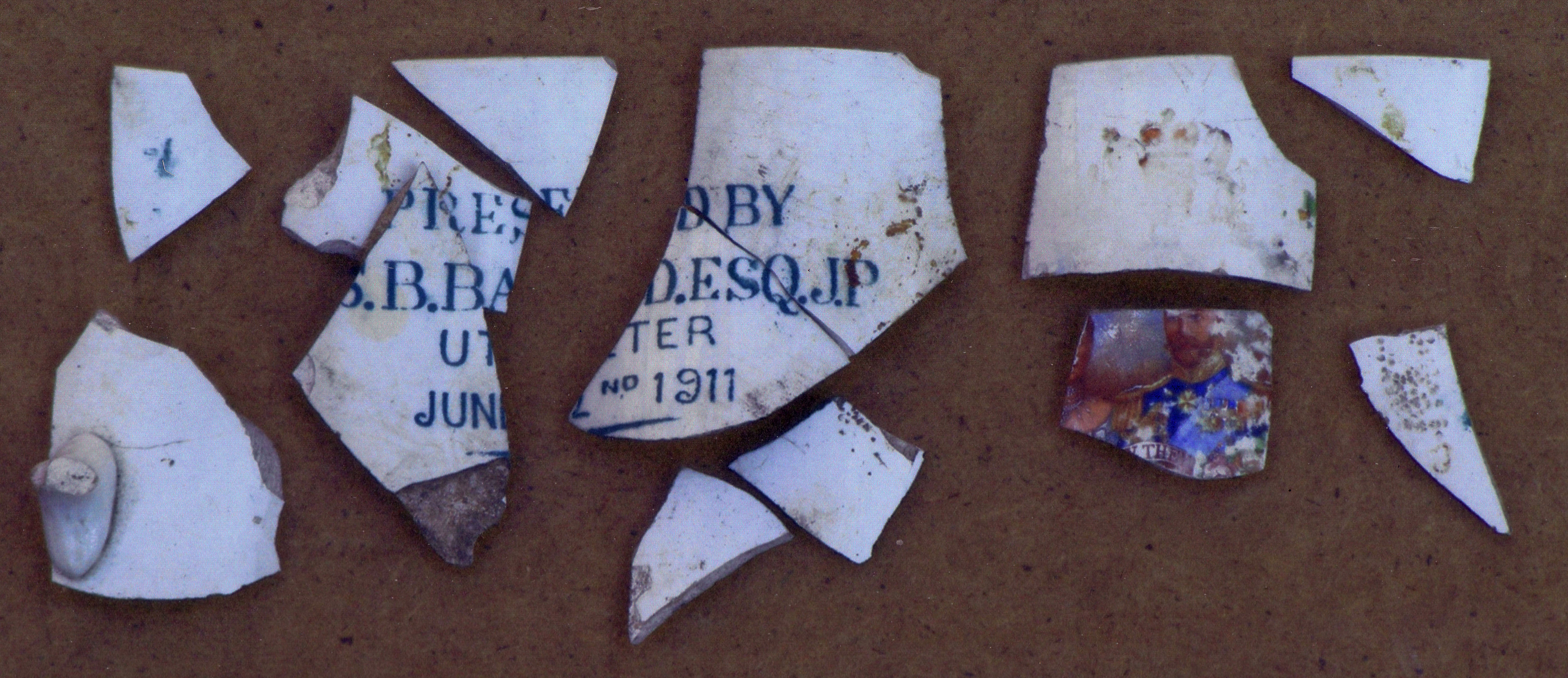 |
The Soldiers Died database indicates that he initially served as 6782 in the North Staffordshire Regiment. According to the CWGC Roll of Honour he was serving with the 6th battalion of the York and Lancaster Regiment at the time of his death.
|
This picture came from his family’s collection[6a] and shows members of the the 6th North Staffordshire regiment. Might Harry be one of them or does it show one or more of his brothers
|
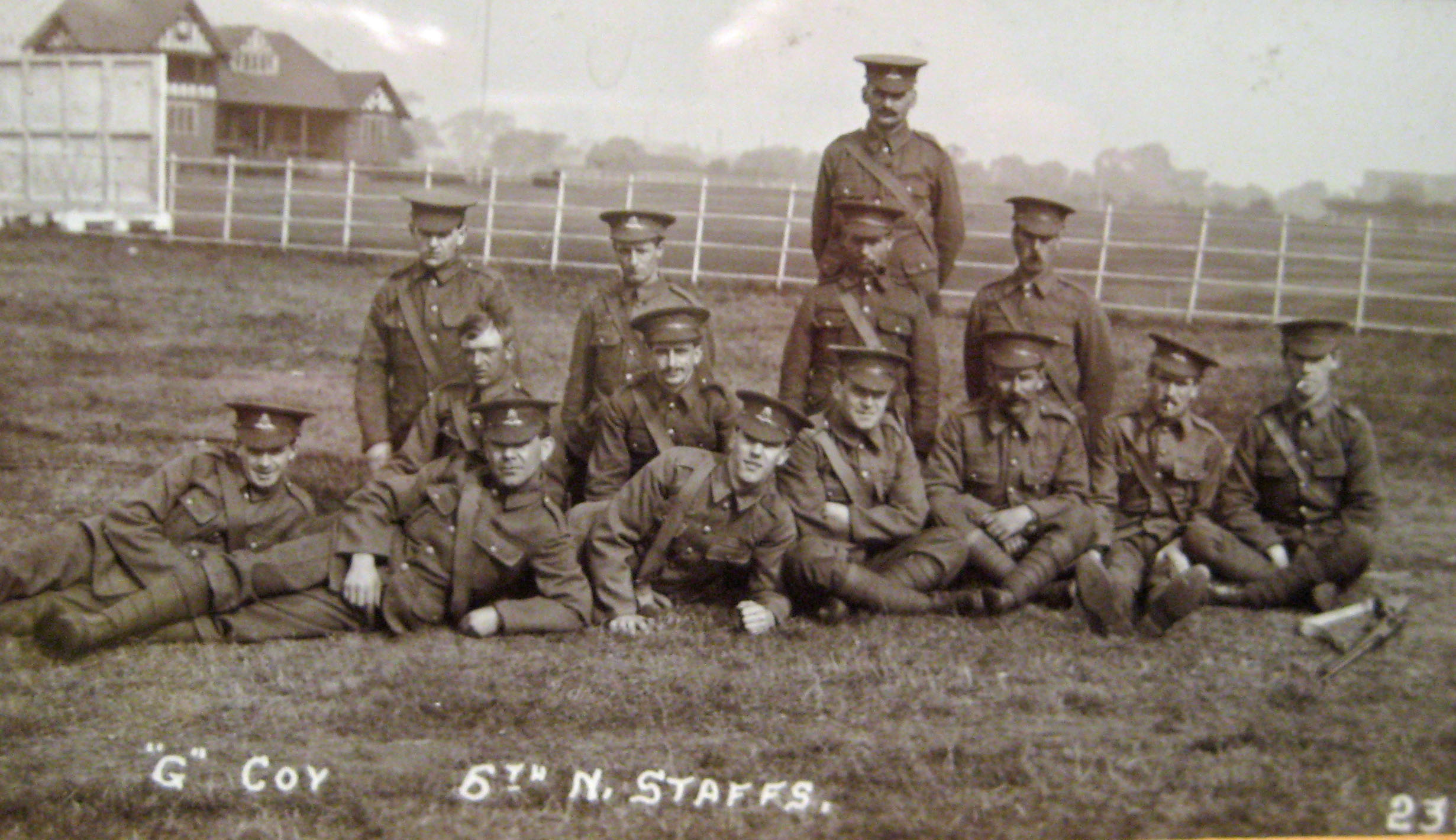 |
In April 1917 he was at home on sick-leave recovering from wounds. He was being brought from the front-line trenches with 'trench feet' when a shell exploded a few yards from him and wounded him in the thigh.
He was reported missing in October 1917 by two officers, one of whom wrote to say that Harry had been recommended for a distinction for a gallant action performed on the Western Front. We know no details yet.
.
He was officially reported as missing at the beginning of January 1918 and his parents endured months of anxiety before receiving official confirmation of his death in the middle of February 1918.
|
Harry’s family produced this memorial leaflet. Their anguish at the circumstances of his death is evident. |
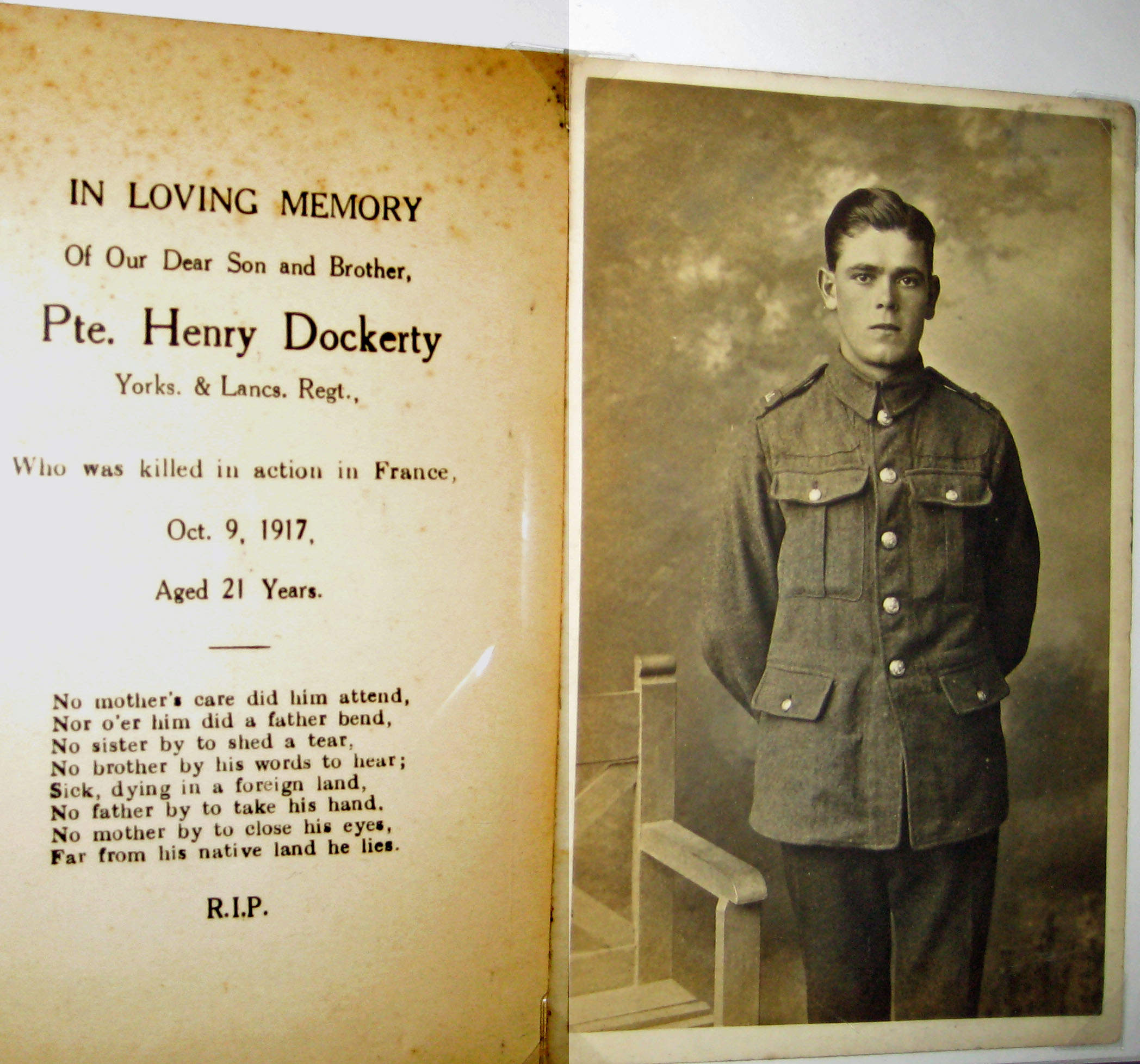 |
|
|
Harry has no known grave and his name is recorded on a panel in the Tyne Cot Memorial. The Memorial Panels run along the walls which surround the back of Tyne Cot Cemetery. |
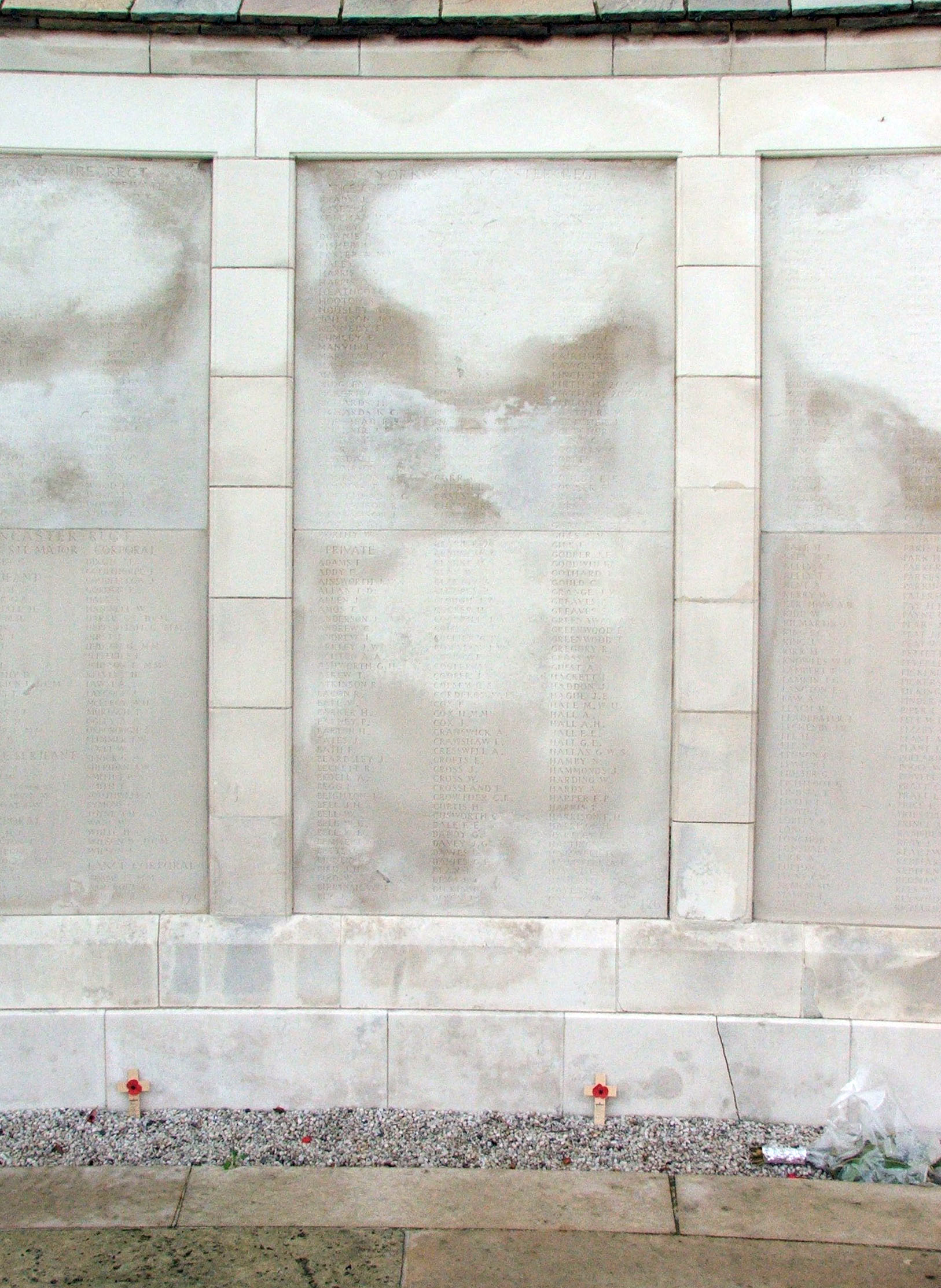 |
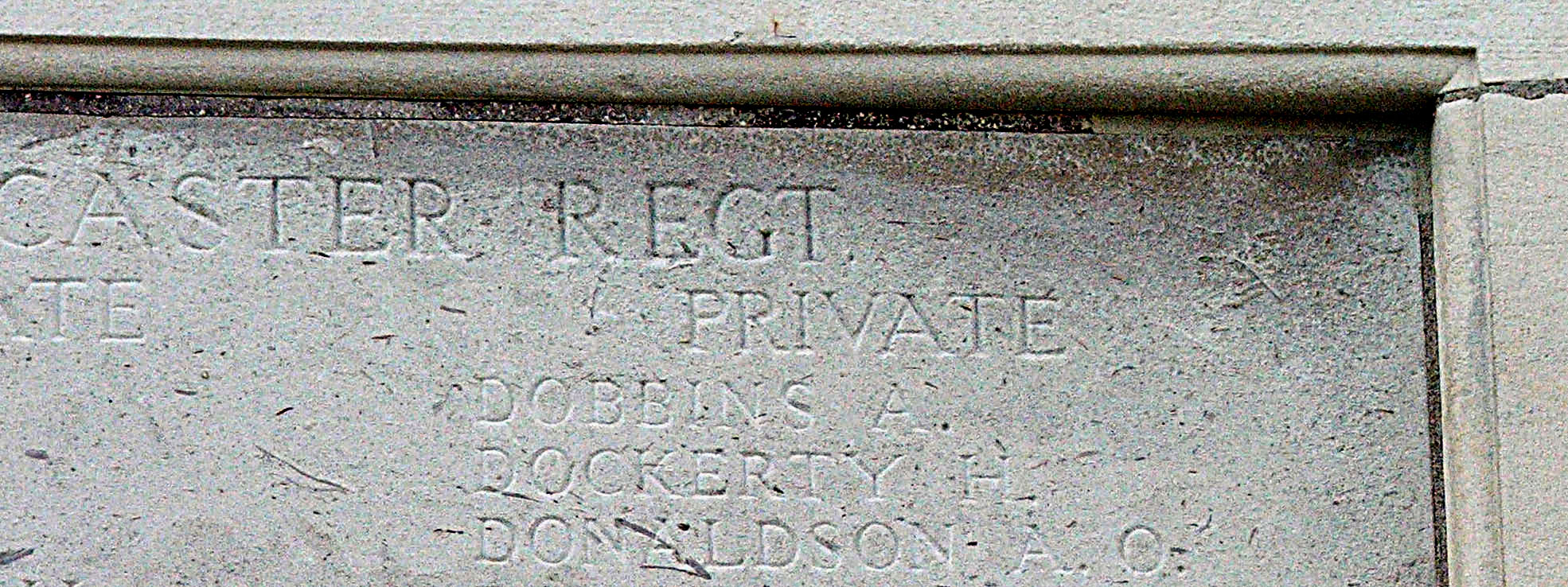 |
|
|
|
|
The Tyne Cot Cemetery and the other cemeteries in the Ypres area contain many graves of unidentified soldiers. He may be one of them, or he may still lie where he fell, somewhere beneath the surrounding fields |
|
|
|
|
He is also commemorated on the war memorial inside the Catholic Church in Balance Street |
Harry’s Brothers and Sisters
|
This picture came from Harry’s family[6a], but they do not know who is shows. The facial resemblance to Harry is striking and we therefore suspect that if it is not Harry it is one of his brothers. |
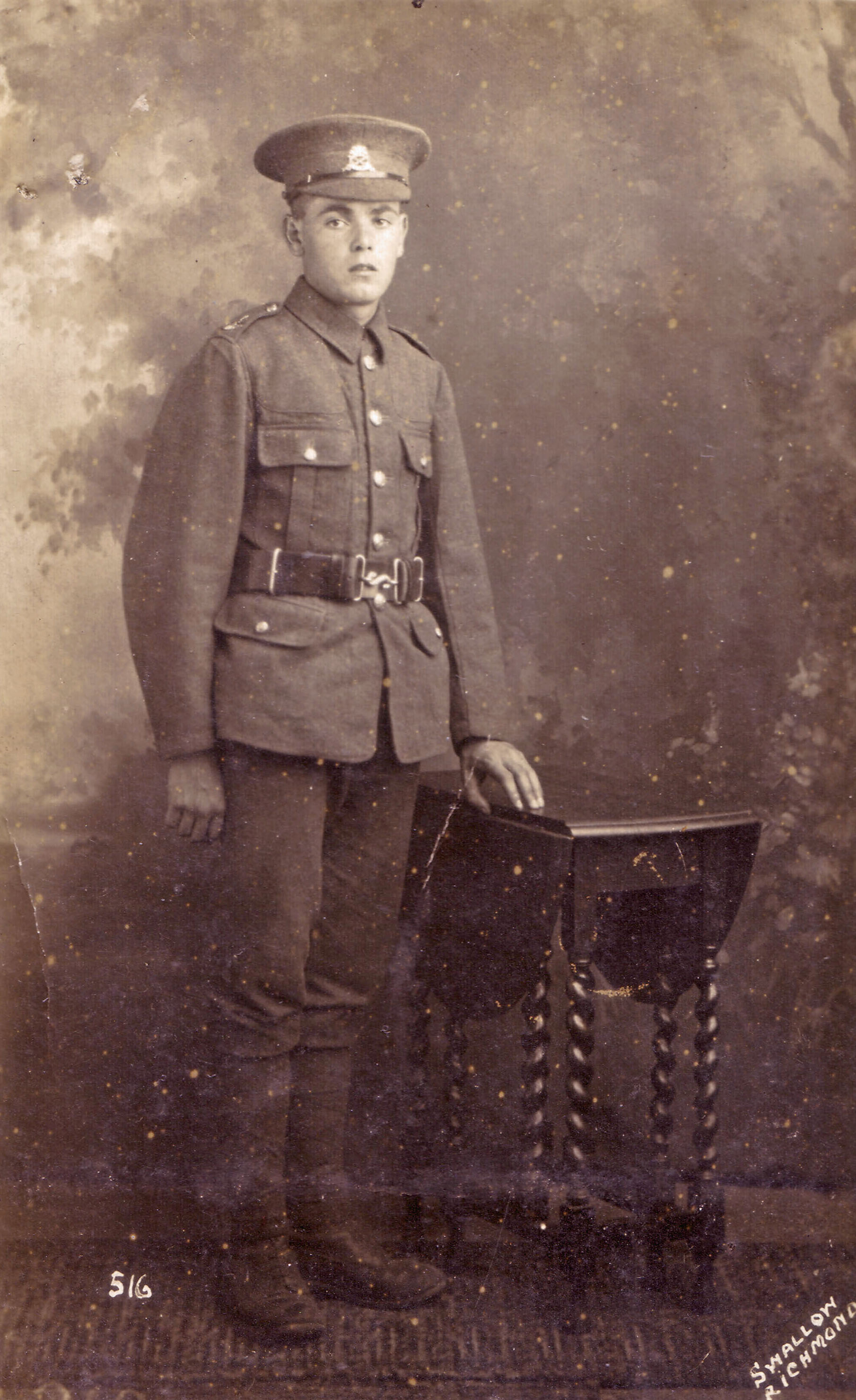 |
|
This picture shows Joe (driving) and Bernard, both dressed in their working clothes. |
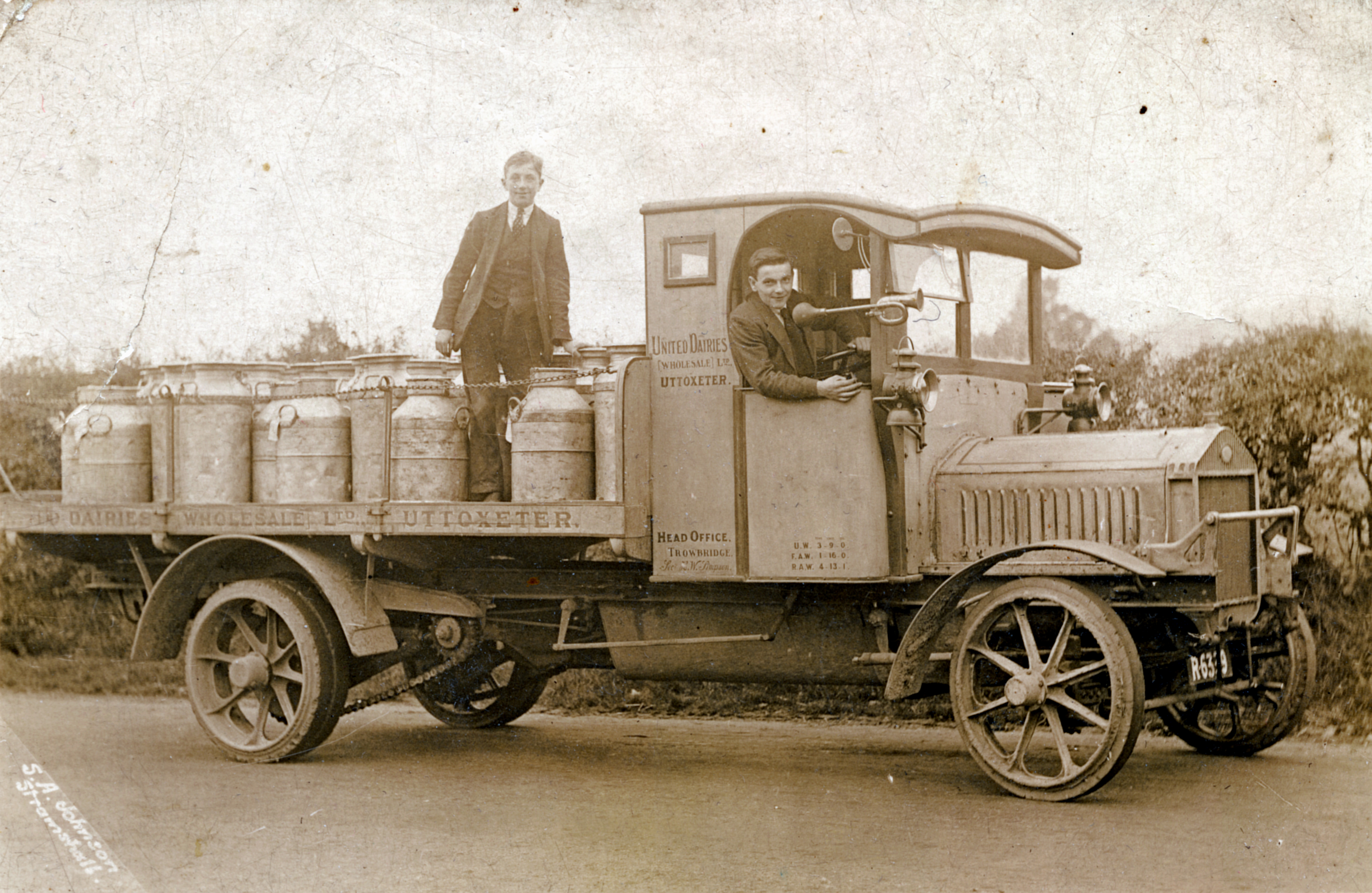 |
Bernard Joseph Dockerty
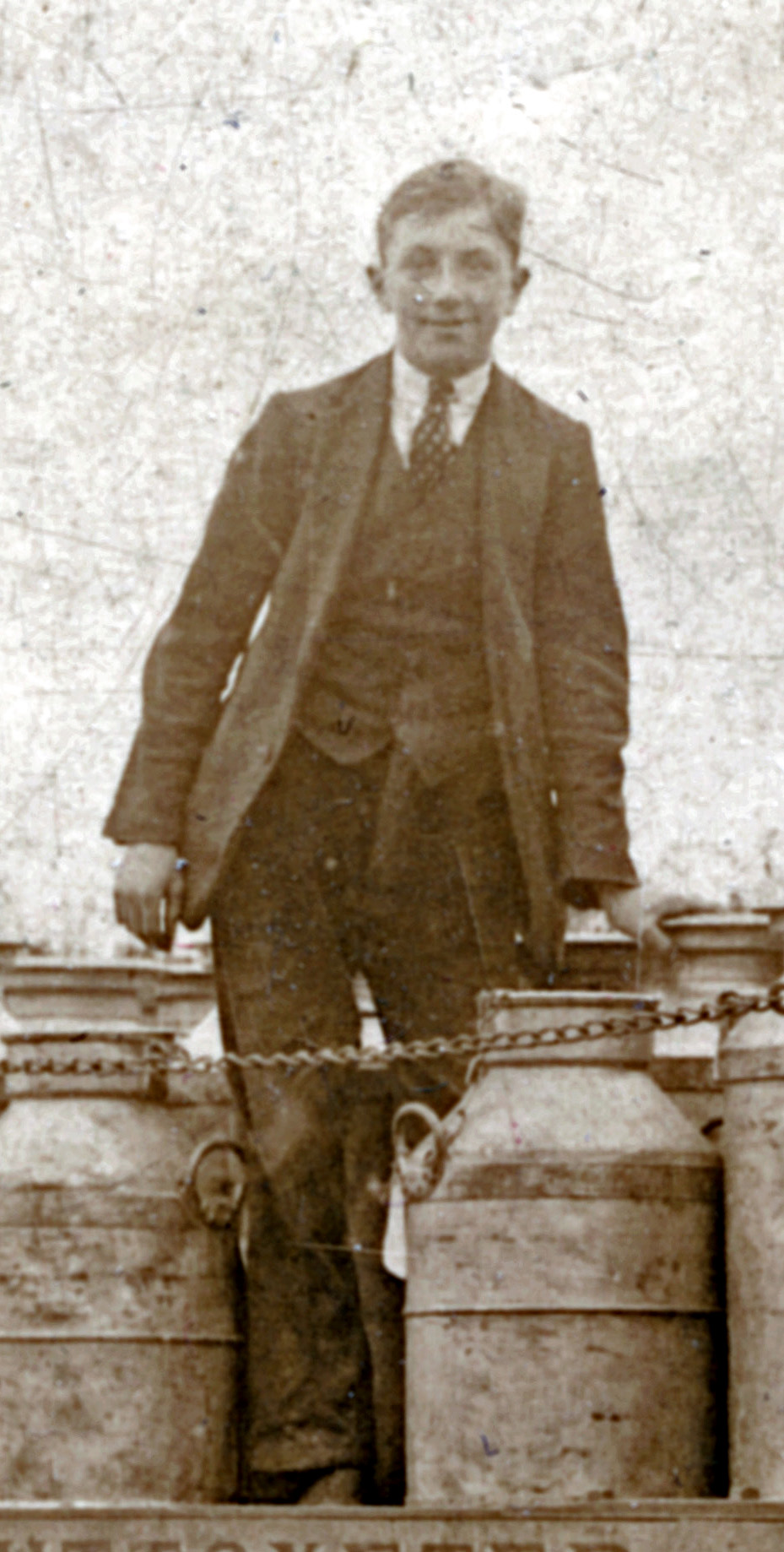 |
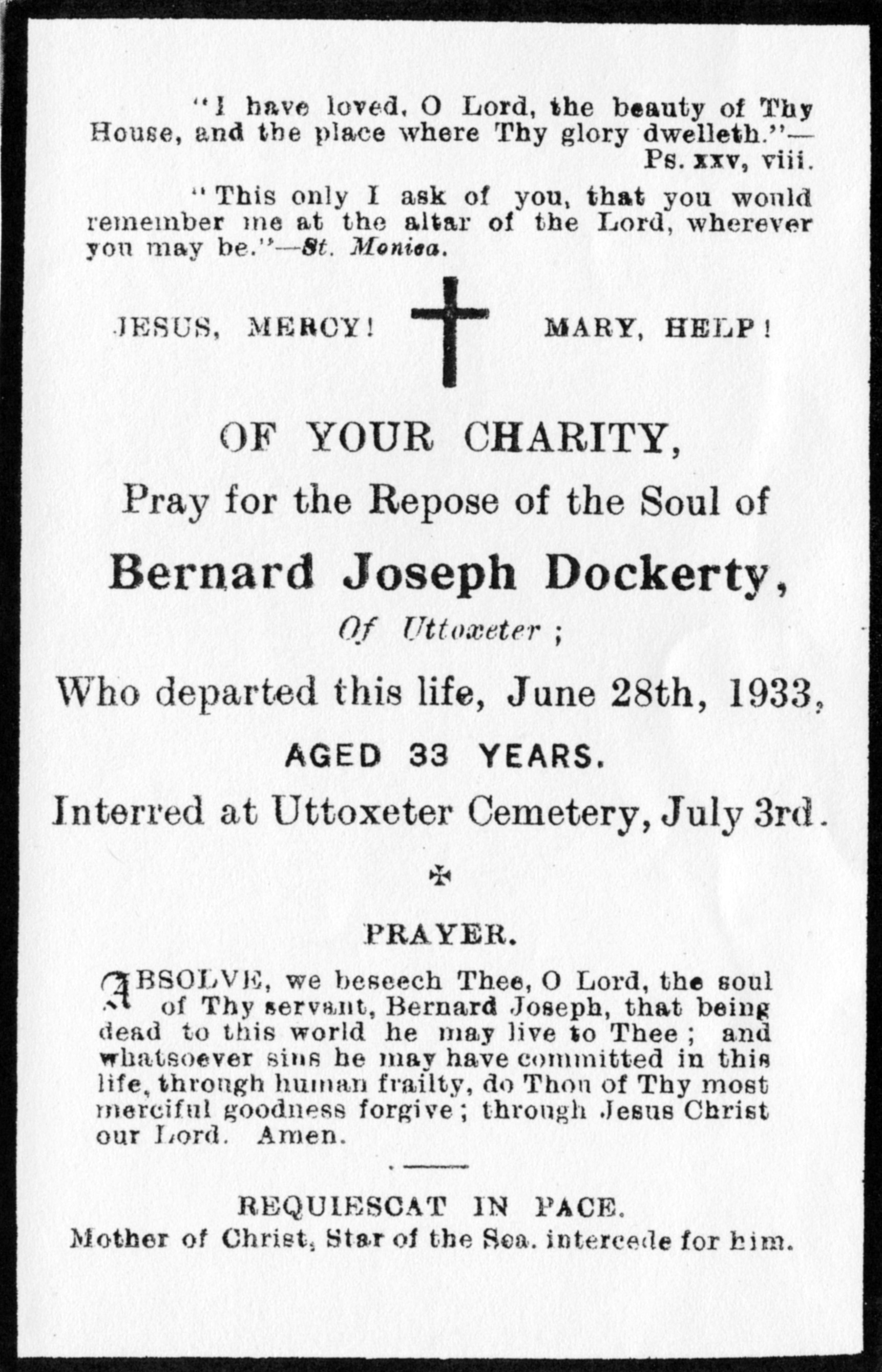 |
John Agustine Dockerty
We presume that John was the brother known as ‘Jack. At the time of Harry’s death, Jack was serving with the Machine Gun Corps and in hospital in France.
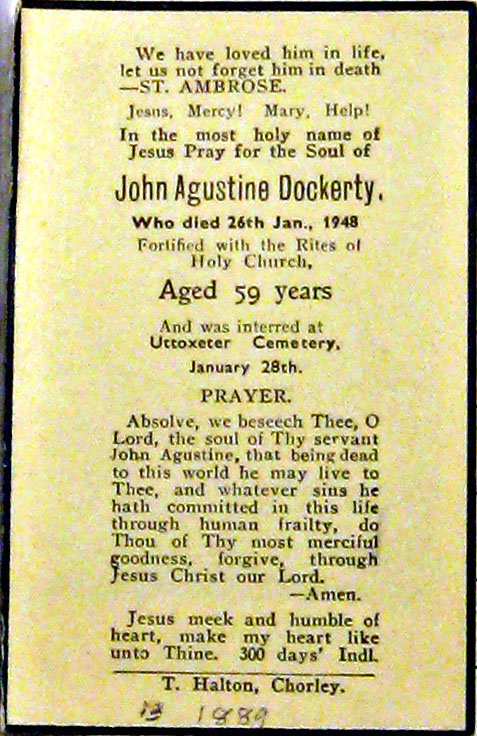 |
Joseph Dockerty
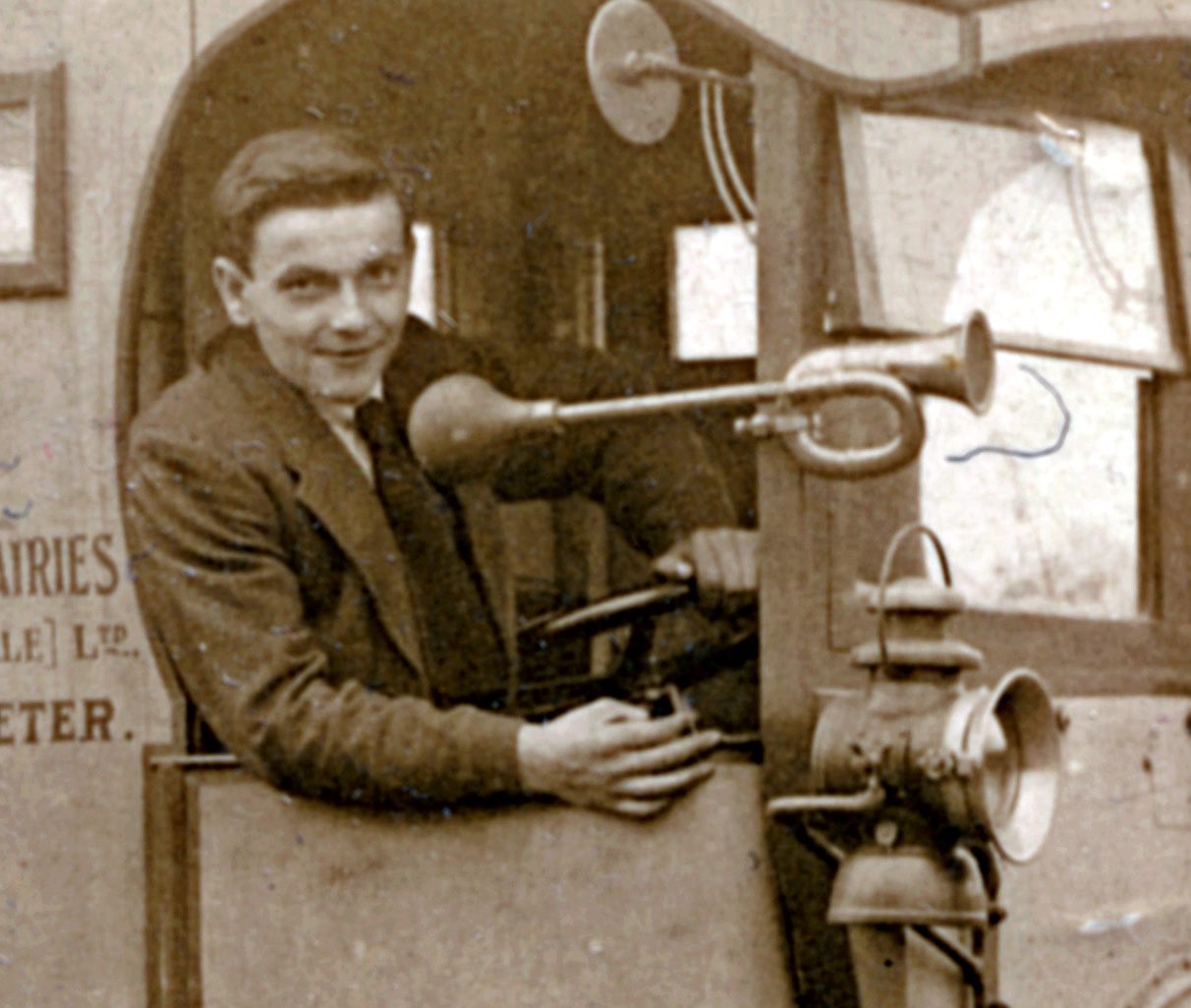 |
Joe’s Pension records have survived in the National Records, which is very fortunate. Most of the records were destroyed by incendiary bombs during the London Blitz and the edges of his documents show signs of scorching. They must have come close to being lost.
Joe joined up at Uttoxeter on the 30th of December 1914, just 2 months after the outbreak of war.
His war records shows that he was discharged from the army on the 24th February 1915, barely 2 months after enlisting. The reason was given as his not being likely to become an efficient soldier. The record also states “This man has not served with the Expeditionary Force”, meaning that he had not been sent overseas.
He was discharged on Medical Grounds because he had suffered a fractured forearm in August and this had impaired the use of his hand.